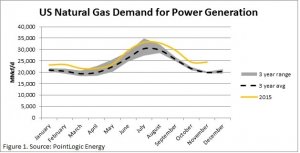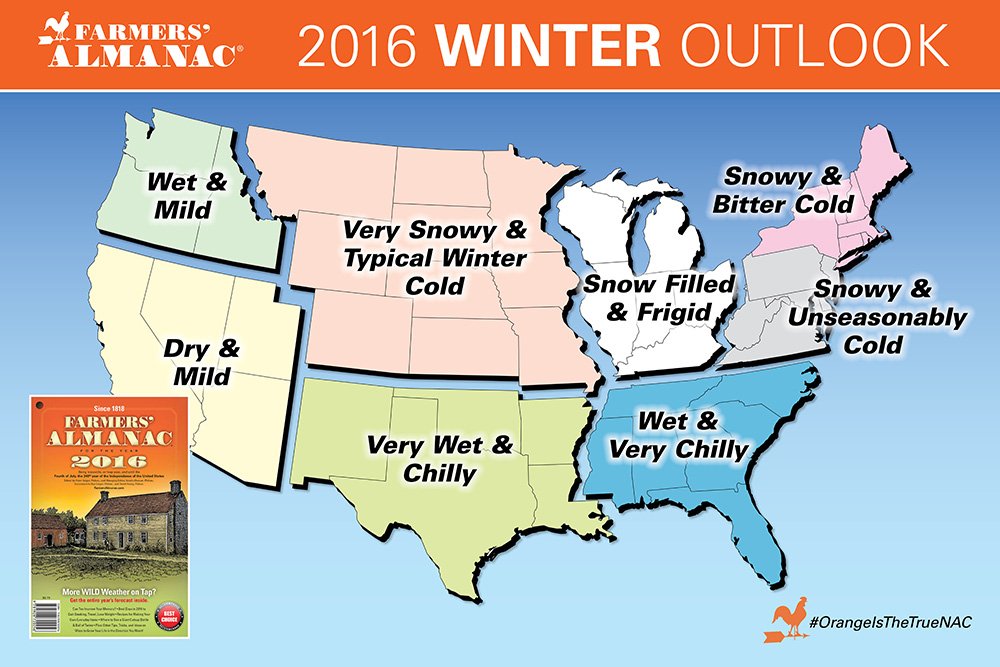There are many factors that have an influence on the demand for energy. A big one is the weather. Colder weather increases residential and commercial heating demand.
The Farmers’ Almanac is telling us that during the winter of 2016 we’re going to see unseasonably mild temperatures with occasional shots of bitter cold in much of the Central U.S including the Great Lakes region, Michigan, Wisconsin, Indiana and Illinois. In the Northeast and Mid-Atlantic States, the prediction is that January and February could have heavy winter weather, while it is expected that in the Southeast States the winter experience will be colder and rainier than normal.
So it’s fairly easy to predict that during the winter months there will be increased demand for energy that could result in increased prices.
Another less obvious factor that influences demand is an increase of the size of a utility’s customer base. This increases demand regardless of the temperature.
There are many large farming and industrial operations that have depended on heating oil and propane. As utilities work to convert these customers to natural gas, their customer base steadily grows along with the demand for natural gas.
A similar fuel switching trend is working its way through power generating facilities as they are moving away from coal towards natural gas as their fuel source. Just five years ago coal accounted for 44 percent of electric power generation and natural gas for 22 percent.
 In April of 2015, natural gas overtook coal as the number one source of U.S. electricity generation for the first time ever with gas powering 31 percent of generation and coal only 30 percent. According to Point Logic Energy, “Natural gas demand for power generation for 2015 will be the highest on record…”1
In April of 2015, natural gas overtook coal as the number one source of U.S. electricity generation for the first time ever with gas powering 31 percent of generation and coal only 30 percent. According to Point Logic Energy, “Natural gas demand for power generation for 2015 will be the highest on record…”1
All this is occurring despite the fact that coal prices have dropped nearly 50 percent since 2011. The primary reason for the switch from coal to natural gas? Increased EPA regulations. It is predicted that over the next few years another 17 percent of coal fired generation will be taken offline.
To overcome expected production losses, a few coal companies are branching out into the natural gas business.
Per the US Energy Information Administration (EIA), “Lower coal demand for domestic consumption and exports is projected to contribute to a 75 million short ton2 decline in production for 2015. Coal production is expected to decline in all coal producing regions, and coal production is projected to remain near 2015 levels in 2016.”
Actually the EIA predicts a 7 percent decline in coal consumption this year because of lower natural gas prices. There could be a slight increase in coal consumption in 2016 due to rising natural gas prices and increasing electricity demand.
It’s important to note that electricity prices usually parallel natural gas prices. If you are in a deregulated state, the time to secure your natural gas and electricity rate is now.

1NATURAL GAS OVERTAKES COAL AS ELECTRIC POWER GENERATOR, July, 2015, Point Logic Energy.
2short ton: In the United Kingdom the ton is defined as 2,240 pounds and is sometimes called a long ton. In the United States the ton is 2,000 pounds and is sometimes called a short ton.



